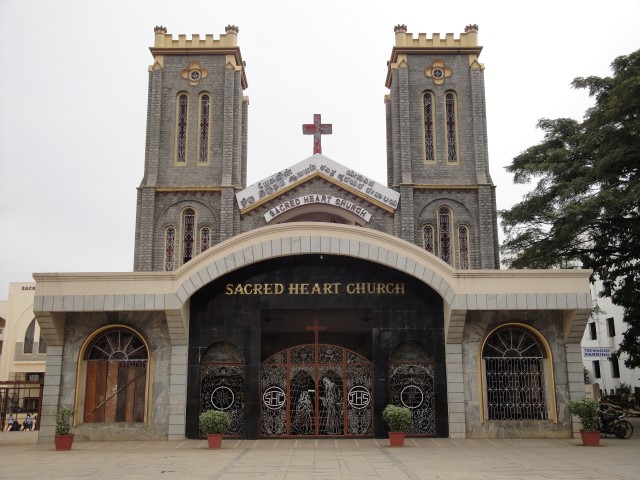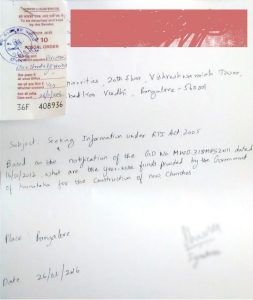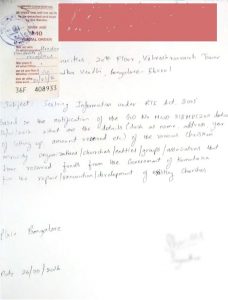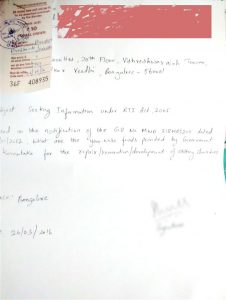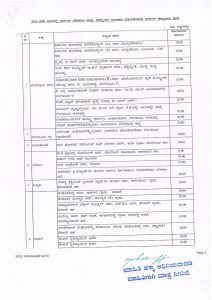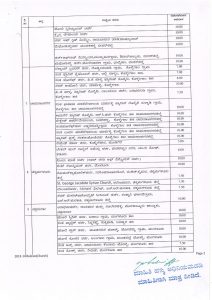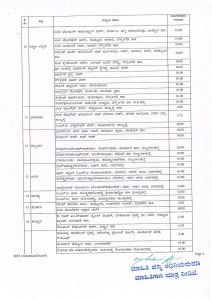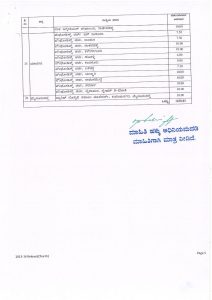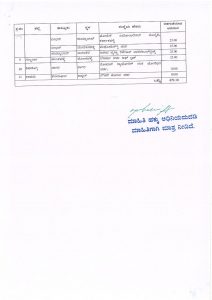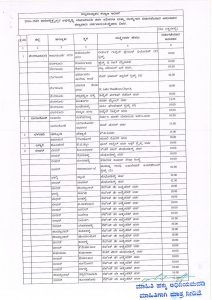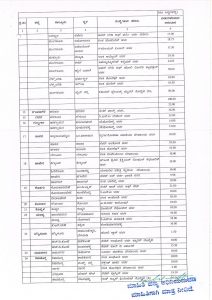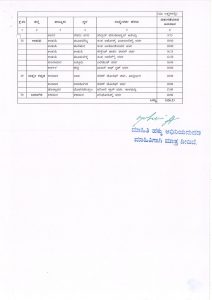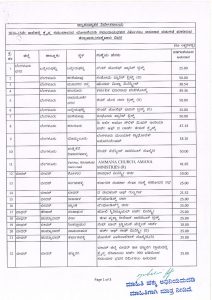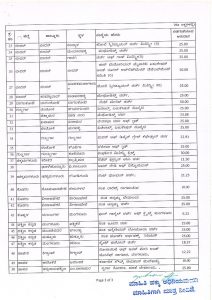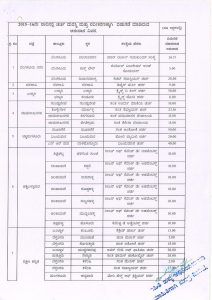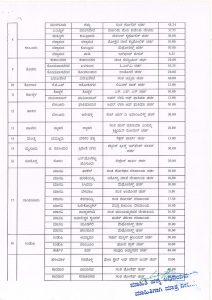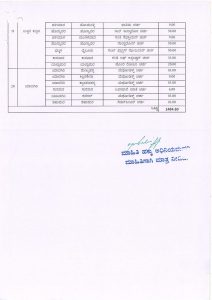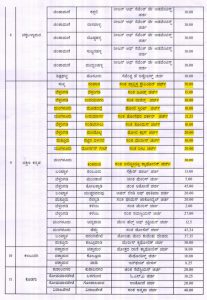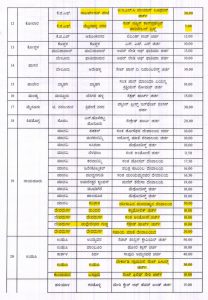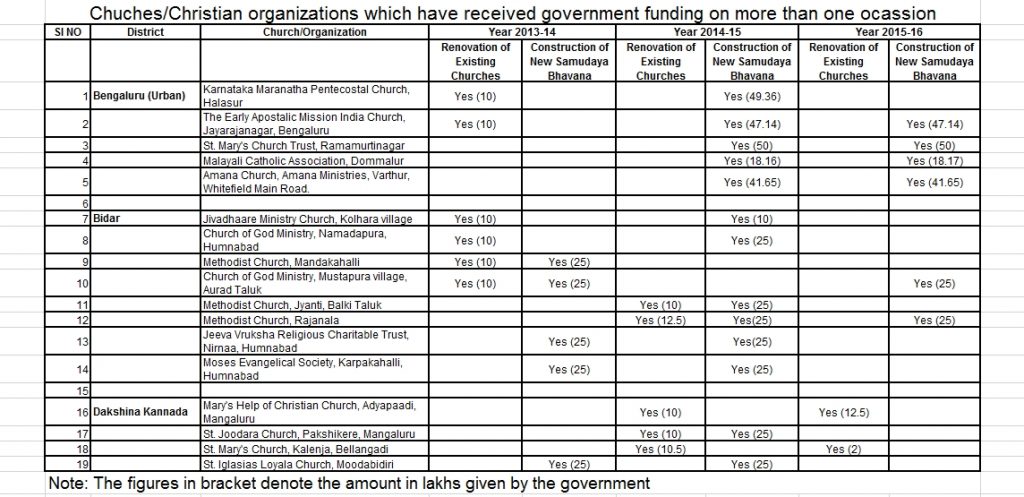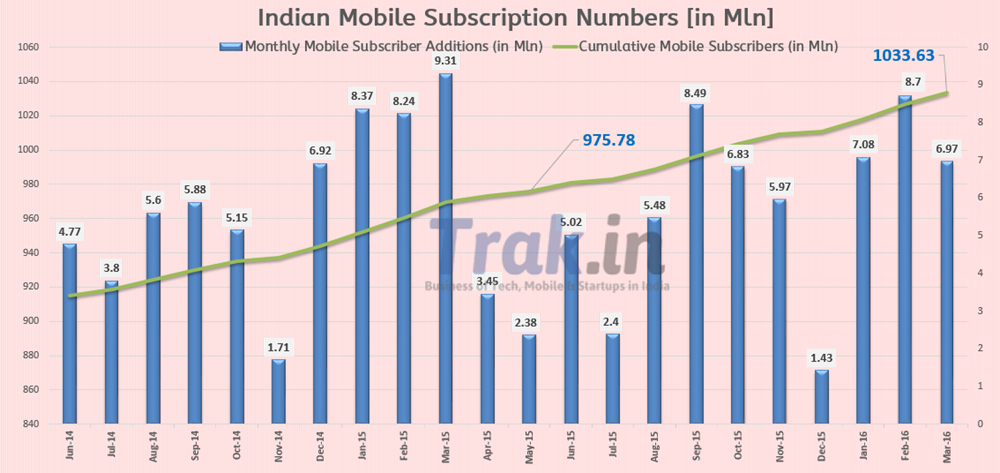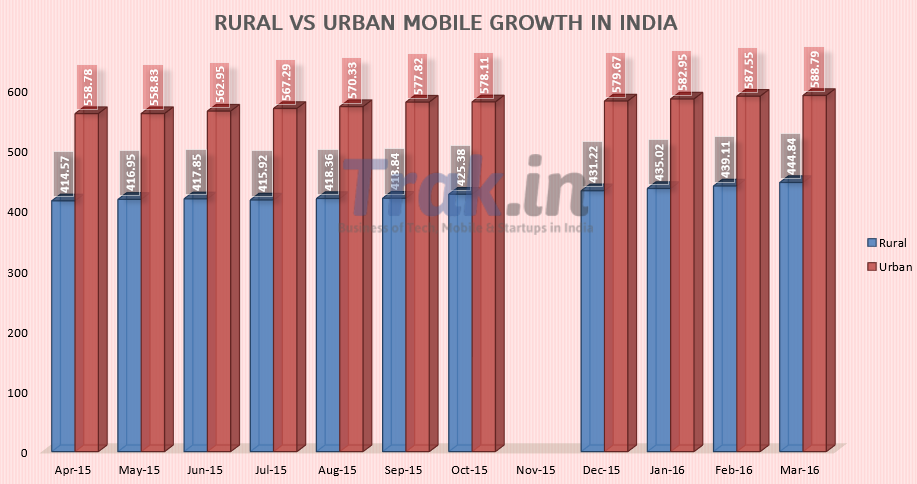The Andronovo cradle of the Indo-Iranians?
An Indo-Iranian culture
While the observation has no evidential value in itself, it deserves noting that the cultural identity of the Andronovo culture has now virtually become a matter of consensus: the Andronovo culture was Indo-Iranian. This book itself has greatly contributed to that consensus, for before its publication, there was still some hesitation.
Thus, many sacrificial and burial practices (and sati, the self-immolation of widows) “characterize the burial practice of the majority of Indo-European peoples: Hittites, Greeks, Germans, Balts, Slavs etc. It leads to the undisputable statement that the
Indians and Iranians
Though Indo-Aryan and Iranian, together with Dardic, are usually reckoned as branches of a single linguistic group, there is evidence for a conflict between an Indo-Aryan and an Iranian population connected with the Vedic c.q. Avestan tradition: “H. Oldenberg showed that in spite of the genetic closeness of religious beliefs, the Vedas and Avesta differ considerably, and that in the Avesta many of the heroes play opposite roles to their counterparts in the Veda.” (p.183)
This starts at the level of the gods, where Indra is glorified in the Vedas and demonized in the Avesta. Rjashva, the Vedic king in the Varshagira battle, is glorified in the Rg-Veda, but demonized in the Avesta. And yet, except for Shrikant Talageri, no one has drawn the logical conclusion: that Indians and Iranians waged a war against one another, in which one side’s heroes were the other side’s villains.
They fought even though they were linguistically and religiously very close. That is one thing most Western or Western-trained scholars miss out on in their study of Vedic conflicts: the battles are not between the very different cultures of an invader group and the natives, they are between different groups of “Aryans”. Even in the Aryan Invasion paradigm, where Indo-Aryans and Iranians are like colonizers of adjoining territories after penetrating south of Bactria, this should have been thought of.
Just compare with the colonial wars: the English against the Spanish on the high seas (pirates), the French against the English in Canada, the Dutch against the Portuguese in Sri Lanka, the English against the Dutch Boers in South Africa: after the initial conquest, subsequent conflicts were between different groups of conquerors. So it didn’t even take the Out-of-India Theory to see that the Vedic Aryans were not fighting the “black aboriginals” in the Battle of the Ten Kings, but their own proto-Avestan cousins.
In mapping the connections between Indo-Aryans and Iranians, her grasp of social and family relations and how these are different between the two groups, is a bit hazy and ultimately incorrect: “Kinsmen marry each other among modern Iranian peoples (…) This could be attributed to the caste system in India when marriage was within a caste without taking into account kinship affiliation.” (p.195) Good try, but this analysis from a distance obscures the thorough difference between the Iranian and Indian family structures.
She is definitely mistaken in linking cousin marriage with the caste system. Iranian cousin marriage probably predated the caste system. Even in the Aryan Invasion Theory (AIT), the invasion predated and occasioned the genesis of the caste system, which took place in India, where the Iranians never set foot. Indian sources too indicate that caste endogamy (not even cousin marriage) was only gradually formed, and that initially caste was passed on only in the paternal line, regardless of the mother’s provenance.
The Brahmin law books prohibited cousin marriage and enacted what the Catholic Church was to call “forbidden degrees of consanguinity”. This prohibition happens to make biological sense too, for a population with frequent cousin marriages produces more handicapped or malformed children (as can be seen by a comparison between native Britons and the worse-afflicted British-Pakistani community, where cousin marriages often form the majority). So, Iranian cousin-marriage can safely be disconnected from Indian caste endogamy.
That was just to illustrate how her knowledge of the Indo-Iranian cultures she is dealing with, is not as good as her undoubtedly first-class knowledge of Andronovo archaeology. That is not an argument in itself, but it is good to keep in mind before accepting her correlation between scripturally attested cultures and archaeology.
One difference is the Iranian predilection for sheep, partly replacing the central place of cattle among the Vedic people: “An ancient term for ‘cattle’ was recorded in the Avesta and was later attributed to ‘sheep’ in the Iranian languages; Yima’s sacrifice of cattle (Yasna 32:8) was replaced by a sheep sacrifice. These facts indicate that the rise of sheep-raising in Iranian society occurred after the collapse of Indo-Iranian unity.” (p.158)
These facts, including their chronological order, are not explained by any Central-Asian development, but fit Shrikant Talageri’s Out-of-India scenario precisely. The first Indo-Aryans and Iranians were neighbours in Northwest India; they developed a conflict in which the Vedic people were victorious while the Iranian regrouped in a territory where some of them had already migrated: Afghanistan. In this mountainous territory, sheep flourished much better than cattle, and therefore became the centre of the Iranian economy.
Indo-Aryan Fedorovo culture
Within the Andronovo horizon, one culture stands out as especially related to the Vedic culture of the Indo-Aryans: the Fedorovo culture. While she finds plenty of Iranian toponyms, many probably stemming from the later Scythian period (1st mill. BCE, as far west as Ukraine), yet “part of the Andronovo toponyms can only be interpreted as Indo-Aryan”. Moreover, ”the Indo-Iranian toponyms of the pre-Scythian period have been found on the territory populated by the Fedorovo tribes”.
Let us assume, with the author, that the Fedorovo culture is Indo-Aryan; though mixed in its classical habitat on the eastern slopes of the Urals with Ugrian, the Uralic branch that was to spawn Hungarian. It flourished around 1700 BC, just in time to reach India for an invasion ca. 1500. That looks neat and surely AIT believers will seize upon it as supporting their invasion scenario.
But then, Kuzmina herself provides material reasons for inverting this northwest-to-southeast scenario:“The hypothesis of an origin of the Fedorovo type in the Urals has been disputed. The sources for Fedorovo ceramic technology and triangular ornamentation are found in the Eneolithic of central and eastern Kazakhstan.” (p.201)
Worse, even eastern Kazakhstan and beyond: “Federovo monuments are discovered not only in the Urals, but also in the south of Central Asia and Afghanistan, where Ugrians have never lived.” (p.201) Moreover, elsewhere she designates central Kazakhstan as the Fedorovo heartland: “The further one moves from central Kazakhstan, the frequency of the complex diminishes and substratum elements increase”. (p.24)
It won’t take any special pleading to have the Fedorovans migrate from Bactria to the Urals instead. At best we could agree that at present, the distribution of Fedorovo findings across Central Asia can be interpreted in more ways than just the Urals-to-Bactria scenario. Moreover, any movement understood as going to Bactria, is never traced as going beyond it, entering India. Here too, we notice a disappointment for those who expected an underpinning for AIT-compliant migrations from the Andronovo data.
Article from the exceptional website - http://indiafacts.org/andronovo-cradle-indo-iranians/

The Andronovo cradle of the Indo-Iranians?
In 2006, the late Russian archaeologist Elena Kuzmina wrote a hefty book on the Origin of the Indo-Iranians (Brill, Leiden). No one who is serious about deciding the Indo-European Homeland question can afford to leave this book unread.
In 2006, the late Russian archaeologist Elena Kuzmina wrote a hefty book on the Origin of the Indo-Iranians (Brill, Leiden). It gives a very detailed history of the Andronovo culture and its surroundings in time and space.

The Andronovo cradle of the Indo-Iranians?
In 2006, the late Russian archaeologist Elena Kuzmina wrote a hefty book on the Origin of the Indo-Iranians (Brill, Leiden). No one who is serious about deciding the Indo-European Homeland question can afford to leave this book unread.
In 2006, the late Russian archaeologist Elena Kuzmina wrote a hefty book on the Origin of the Indo-Iranians (Brill, Leiden). It gives a very detailed history of the Andronovo culture and its surroundings in time and space.
The Andronovo culture spanned most of Central Asia in the 2nd millennium BCE, from the Urals to Bactria. At the same time, the book contains a lot of speculation about links to the information given in the Veda and the Avesta, generally convincing.
While it has become a very authoritative work on Andronovo, there remains a big question-mark over its presumptuous title: was this culture indeed the cradle of the Indo-Iranians?
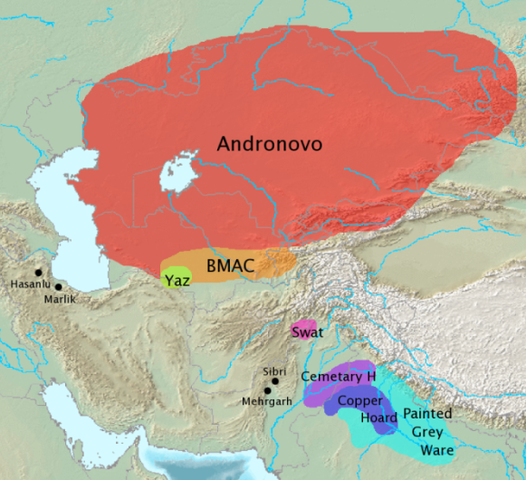
Archaeological cultures associated with Indo-Iranian migrations (after EIEC). The Andronovo, BMAC and Yaz cultures have often been associated with Indo-Iranian migrations.
No one who is serious about deciding the Indo-European Homeland question can afford to leave this book unread. It promises to give the prehistory of the Aryan invasion, the preceding movements of the tribes concerned, perhaps even the events that triggered their migration into India. No one serious about arguing the case for an Indian Homeland can afford to leave it unanswered. I have had it on my shelves for a few years, hoping to find time to thoroughly review it. Realistically, I still haven’t found that time, and I have not yet co-operated with an archaeologist on this. But a review simply cannot wait anymore.
The book ends with a discussion of the procedure for establishing the chronology of Andronovo, and starts with a detailed explanation about the archaeological method and the rules for ethnographic reconstruction.

Archaeological cultures associated with Indo-Iranian migrations (after EIEC). The Andronovo, BMAC and Yaz cultures have often been associated with Indo-Iranian migrations.
No one who is serious about deciding the Indo-European Homeland question can afford to leave this book unread. It promises to give the prehistory of the Aryan invasion, the preceding movements of the tribes concerned, perhaps even the events that triggered their migration into India. No one serious about arguing the case for an Indian Homeland can afford to leave it unanswered. I have had it on my shelves for a few years, hoping to find time to thoroughly review it. Realistically, I still haven’t found that time, and I have not yet co-operated with an archaeologist on this. But a review simply cannot wait anymore.
The book ends with a discussion of the procedure for establishing the chronology of Andronovo, and starts with a detailed explanation about the archaeological method and the rules for ethnographic reconstruction.
Then follows an analysis of the typical Andronovo features that allow her to define the spatial and temporal boundaries of the culture she studies. Culturally important and archaeologically easily accessible are funeral practices: “Cremation dominates in the Urals; in central and northern Kazakhstan the cemeteries are bi-ritual; in eastern Kazakhstan and south Siberia, inhumation prevails.”
And at once, we notice something that will characterize many passages: though convinced of the Aryan invasion, she furnishes data that are compatible with, or even point to, an opposite Bactria-to-Urals migration.
And at once, we notice something that will characterize many passages: though convinced of the Aryan invasion, she furnishes data that are compatible with, or even point to, an opposite Bactria-to-Urals migration.
In this case, the Indo-Europeans, historically known to practise both types of disposal of the dead, but mainly cremation (though inhumation will be magnified in the eyes of the archaeologists as it leaves so many more traces), brought cremation with them along the Amu Darya to the Aral Lake area and on to the Urals. The native practice was predominantly inhumation, and it was preserved far from this trajectory, in areas where the Indo-Europeans didn’t come.
An Indo-Iranian culture
While the observation has no evidential value in itself, it deserves noting that the cultural identity of the Andronovo culture has now virtually become a matter of consensus: the Andronovo culture was Indo-Iranian. This book itself has greatly contributed to that consensus, for before its publication, there was still some hesitation.
Thus, many sacrificial and burial practices (and sati, the self-immolation of widows) “characterize the burial practice of the majority of Indo-European peoples: Hittites, Greeks, Germans, Balts, Slavs etc. It leads to the undisputable statement that the
Andronovans were Indo-Europeans. However, the common Indo-European character of the whole burial complex does not, strictly speaking, permit one to declare the Andronovans as Indo-Aryans.” (p.195) However, she finds that “the variety of Andronovo funeral rites finds a complete and thorough correlation in early indic texts “. (p.195)
What decides the question for her, is the wealth of correspondences between her material findings and references in Indian or Iranian texts.
What decides the question for her, is the wealth of correspondences between her material findings and references in Indian or Iranian texts.
Thus, she describes the typical fireplace and then the corresponding reference in Vedic literature. These “hearths comprise a shallow round or oval pit… often covered with flat stone slabs on the bottom…. This hearth is described in ancient Indian texts as the domestic fire gārhapatya-, ‘fire of the master of the house’… Such hearths were used for ritual purposes: a bride would go around it, a widow would perform a ritual dance, people jumped over it during a feast.” (p.45)


Another type of hearth “has a rectangular form… and was made of closely adjusted rectangular stone slabs inserted into the ground on their narrow ends. Such hearths were found in the centre of a house, kept clean, and it is likely that they had a ritual function… This type of hearth corresponded to the early Indian special cult hearth āhavanīya…” (p.45) As she notes, round and rectangular hearths had different functions among the Indo-Europeans. Thus, in Rome, round hearths were sacred to the goddess Vesta, rectangular (including square) ones to male deities.
This could be coincidence, for there are only that many ways of making a fireplace, and it may have been by coincidence that Indo-Iranians and Andronovans hit upon the same design. But let us assume a genealogical relationship: either the Andronovan hearth became the Vedic one, as Kuzmina assumes, or vice-versa. Then everything depends on the chronology. South-Asians may have left their homes and taken the fireplace design with them to Central Asia, where from 2000 BCE they participated in the Andronovo culture.
This, of course, presupposes that an “Aryan emigration from India” took place at the very least 500 years before the AIT posits its own Aryan invasion of India. Indeed, this would fit what Shrikant Talageri says in his The Rigveda and the Avesta, a Final Analysis: the proto-Mitanni/Kassite Indo-Aryans left India ca. 2000 BCE (for West Asia, but some of them may have branched off to Central Asia), the Iranians even earlier.
This could be coincidence, for there are only that many ways of making a fireplace, and it may have been by coincidence that Indo-Iranians and Andronovans hit upon the same design. But let us assume a genealogical relationship: either the Andronovan hearth became the Vedic one, as Kuzmina assumes, or vice-versa. Then everything depends on the chronology. South-Asians may have left their homes and taken the fireplace design with them to Central Asia, where from 2000 BCE they participated in the Andronovo culture.
This, of course, presupposes that an “Aryan emigration from India” took place at the very least 500 years before the AIT posits its own Aryan invasion of India. Indeed, this would fit what Shrikant Talageri says in his The Rigveda and the Avesta, a Final Analysis: the proto-Mitanni/Kassite Indo-Aryans left India ca. 2000 BCE (for West Asia, but some of them may have branched off to Central Asia), the Iranians even earlier.
Indians and Iranians
Though Indo-Aryan and Iranian, together with Dardic, are usually reckoned as branches of a single linguistic group, there is evidence for a conflict between an Indo-Aryan and an Iranian population connected with the Vedic c.q. Avestan tradition: “H. Oldenberg showed that in spite of the genetic closeness of religious beliefs, the Vedas and Avesta differ considerably, and that in the Avesta many of the heroes play opposite roles to their counterparts in the Veda.” (p.183)
This starts at the level of the gods, where Indra is glorified in the Vedas and demonized in the Avesta. Rjashva, the Vedic king in the Varshagira battle, is glorified in the Rg-Veda, but demonized in the Avesta. And yet, except for Shrikant Talageri, no one has drawn the logical conclusion: that Indians and Iranians waged a war against one another, in which one side’s heroes were the other side’s villains.
They fought even though they were linguistically and religiously very close. That is one thing most Western or Western-trained scholars miss out on in their study of Vedic conflicts: the battles are not between the very different cultures of an invader group and the natives, they are between different groups of “Aryans”. Even in the Aryan Invasion paradigm, where Indo-Aryans and Iranians are like colonizers of adjoining territories after penetrating south of Bactria, this should have been thought of.
Just compare with the colonial wars: the English against the Spanish on the high seas (pirates), the French against the English in Canada, the Dutch against the Portuguese in Sri Lanka, the English against the Dutch Boers in South Africa: after the initial conquest, subsequent conflicts were between different groups of conquerors. So it didn’t even take the Out-of-India Theory to see that the Vedic Aryans were not fighting the “black aboriginals” in the Battle of the Ten Kings, but their own proto-Avestan cousins.
In mapping the connections between Indo-Aryans and Iranians, her grasp of social and family relations and how these are different between the two groups, is a bit hazy and ultimately incorrect: “Kinsmen marry each other among modern Iranian peoples (…) This could be attributed to the caste system in India when marriage was within a caste without taking into account kinship affiliation.” (p.195) Good try, but this analysis from a distance obscures the thorough difference between the Iranian and Indian family structures.
She is definitely mistaken in linking cousin marriage with the caste system. Iranian cousin marriage probably predated the caste system. Even in the Aryan Invasion Theory (AIT), the invasion predated and occasioned the genesis of the caste system, which took place in India, where the Iranians never set foot. Indian sources too indicate that caste endogamy (not even cousin marriage) was only gradually formed, and that initially caste was passed on only in the paternal line, regardless of the mother’s provenance.
The Brahmin law books prohibited cousin marriage and enacted what the Catholic Church was to call “forbidden degrees of consanguinity”. This prohibition happens to make biological sense too, for a population with frequent cousin marriages produces more handicapped or malformed children (as can be seen by a comparison between native Britons and the worse-afflicted British-Pakistani community, where cousin marriages often form the majority). So, Iranian cousin-marriage can safely be disconnected from Indian caste endogamy.
That was just to illustrate how her knowledge of the Indo-Iranian cultures she is dealing with, is not as good as her undoubtedly first-class knowledge of Andronovo archaeology. That is not an argument in itself, but it is good to keep in mind before accepting her correlation between scripturally attested cultures and archaeology.
One difference is the Iranian predilection for sheep, partly replacing the central place of cattle among the Vedic people: “An ancient term for ‘cattle’ was recorded in the Avesta and was later attributed to ‘sheep’ in the Iranian languages; Yima’s sacrifice of cattle (Yasna 32:8) was replaced by a sheep sacrifice. These facts indicate that the rise of sheep-raising in Iranian society occurred after the collapse of Indo-Iranian unity.” (p.158)
These facts, including their chronological order, are not explained by any Central-Asian development, but fit Shrikant Talageri’s Out-of-India scenario precisely. The first Indo-Aryans and Iranians were neighbours in Northwest India; they developed a conflict in which the Vedic people were victorious while the Iranian regrouped in a territory where some of them had already migrated: Afghanistan. In this mountainous territory, sheep flourished much better than cattle, and therefore became the centre of the Iranian economy.
Indo-Aryan Fedorovo culture
Within the Andronovo horizon, one culture stands out as especially related to the Vedic culture of the Indo-Aryans: the Fedorovo culture. While she finds plenty of Iranian toponyms, many probably stemming from the later Scythian period (1st mill. BCE, as far west as Ukraine), yet “part of the Andronovo toponyms can only be interpreted as Indo-Aryan”. Moreover, ”the Indo-Iranian toponyms of the pre-Scythian period have been found on the territory populated by the Fedorovo tribes”.
Let us assume, with the author, that the Fedorovo culture is Indo-Aryan; though mixed in its classical habitat on the eastern slopes of the Urals with Ugrian, the Uralic branch that was to spawn Hungarian. It flourished around 1700 BC, just in time to reach India for an invasion ca. 1500. That looks neat and surely AIT believers will seize upon it as supporting their invasion scenario.
But then, Kuzmina herself provides material reasons for inverting this northwest-to-southeast scenario:“The hypothesis of an origin of the Fedorovo type in the Urals has been disputed. The sources for Fedorovo ceramic technology and triangular ornamentation are found in the Eneolithic of central and eastern Kazakhstan.” (p.201)
Worse, even eastern Kazakhstan and beyond: “Federovo monuments are discovered not only in the Urals, but also in the south of Central Asia and Afghanistan, where Ugrians have never lived.” (p.201) Moreover, elsewhere she designates central Kazakhstan as the Fedorovo heartland: “The further one moves from central Kazakhstan, the frequency of the complex diminishes and substratum elements increase”. (p.24)
It won’t take any special pleading to have the Fedorovans migrate from Bactria to the Urals instead. At best we could agree that at present, the distribution of Fedorovo findings across Central Asia can be interpreted in more ways than just the Urals-to-Bactria scenario. Moreover, any movement understood as going to Bactria, is never traced as going beyond it, entering India. Here too, we notice a disappointment for those who expected an underpinning for AIT-compliant migrations from the Andronovo data.
Aryan Invasion
When it comes to the AIT, we note that Elena Kuzmina totally relies on an outdated and certainly wrong racial account: “In the Rigveda light skin alongside language is the main feature of the Aryans, differentiating them from the aboriginal Dāsa-Dasyu population, who were a dark-skinned, small people speaking another language and who did not believe in the Vedic gods.” (p.172) This is strictly separate from her archaeological findings, but it strongly colours her interpretation of those findings in favour of a northwest-to-southeast migration. It is mostly based on the usual reading of the Vedic references to the Battle of the Ten Kings, which is in fact not against any dark aboriginals but against the Iranians.
In her view, three stages are discernible in the movement from Andronovo into India.
Stage 1 takes place in the 20th-17th century BCE. Material culture, including “a cult of the horse” moves from the eastern slopes of the Urals to Central Asia, but: “There is no evidence that they reached India.”(p.452) She naturally rejects whatever might still remain of a belief in the invaders’ violent destruction of the Harappan cities.
More to the northwest, on the Amu Darya near the Aral Lake, “the newcomers were not numerous, but they employed horses and chariots and established elite dominance and adopted the culture of the BMAC.” (p.452, Bactria-Margiana Archaeological Complex) So what she has actually found, is the cultural elements of BMAC near the Aral Lake. This means the BMAC was expanding northward, precisely what you would expect if you assume the Iranians first settled in Bactria and then expanded into Kazakhstan and onwards to the Urals. We will meet a later movement from Bactria to the west, but this movement took place several times, including in ca. 2000 BCE.
Then she jumps to India, without positing any causal link with any Andronovo development, and quotes G. Possehl to the effect that “the way of life essentially changed in India in this period” (453): urban culture became a village culture, luxuries and international trade disappeared, but means of transport, types of pottery and procedures of house-building continued. “So the opinion of the Indian scholars, who emphasize the conservation of the Harappan traditions in the culture of the subsequent periods is quite correct.” (p.453)
Stage 2 is situated in the 16th-14th century BCE. All kinds of movements take place north of (or at most, in the north of) present-day Afghanistan, such as the Timber Grave culture mixing with the Andronovo culture around Samarkand, far away from India. No sign, apparently, of an invasion of Andronovans into India, confirming the non-discovery of Andronovan elements by Indian archaeologists. Yet, this is precisely the age of the supposed Aryan invasion, that AIT believers go around declaring to have been confirmed by Kuzmina’s research.
This is when the “Fedorovan tribes reached the Amu Darya… And actively interacted with the bearers of the farming Bactria-Margiana culture.” (453) We note “the penetration of the Andronovo population in the BMAC and the probable subjugation of the indigenous population” (454), the “synthesis of the Andronovo Fedorovo culture and BMAC” (454). Fine, but none of that amounts to an invasion of India.
Stage 3 really comes too late for the Aryan invasion of India: 13th-9th century BC. It was “caused by the cultural transformation of the Eurasian steppes as a result of internal development and ecological crises”. (p.454) That is richly vague, but it has no effect anymore on a putative invasion of India around 1500 BCE.
A migration that is identified, however, is east-to-west: “a part of of the Timber-grave tribes moved [from Uzbekistan or even the Amu Darya basin] to the North Caucasus because of the crisis; they had already begun appearing and settling in the Caucasus at an earlier time”. (p.454) This must be the Scythian migration, which only added to the already existing Iranian presence near and beyond the Urals.
When it comes to the AIT, we note that Elena Kuzmina totally relies on an outdated and certainly wrong racial account: “In the Rigveda light skin alongside language is the main feature of the Aryans, differentiating them from the aboriginal Dāsa-Dasyu population, who were a dark-skinned, small people speaking another language and who did not believe in the Vedic gods.” (p.172) This is strictly separate from her archaeological findings, but it strongly colours her interpretation of those findings in favour of a northwest-to-southeast migration. It is mostly based on the usual reading of the Vedic references to the Battle of the Ten Kings, which is in fact not against any dark aboriginals but against the Iranians.
In her view, three stages are discernible in the movement from Andronovo into India.
Stage 1 takes place in the 20th-17th century BCE. Material culture, including “a cult of the horse” moves from the eastern slopes of the Urals to Central Asia, but: “There is no evidence that they reached India.”(p.452) She naturally rejects whatever might still remain of a belief in the invaders’ violent destruction of the Harappan cities.
More to the northwest, on the Amu Darya near the Aral Lake, “the newcomers were not numerous, but they employed horses and chariots and established elite dominance and adopted the culture of the BMAC.” (p.452, Bactria-Margiana Archaeological Complex) So what she has actually found, is the cultural elements of BMAC near the Aral Lake. This means the BMAC was expanding northward, precisely what you would expect if you assume the Iranians first settled in Bactria and then expanded into Kazakhstan and onwards to the Urals. We will meet a later movement from Bactria to the west, but this movement took place several times, including in ca. 2000 BCE.
Then she jumps to India, without positing any causal link with any Andronovo development, and quotes G. Possehl to the effect that “the way of life essentially changed in India in this period” (453): urban culture became a village culture, luxuries and international trade disappeared, but means of transport, types of pottery and procedures of house-building continued. “So the opinion of the Indian scholars, who emphasize the conservation of the Harappan traditions in the culture of the subsequent periods is quite correct.” (p.453)
Stage 2 is situated in the 16th-14th century BCE. All kinds of movements take place north of (or at most, in the north of) present-day Afghanistan, such as the Timber Grave culture mixing with the Andronovo culture around Samarkand, far away from India. No sign, apparently, of an invasion of Andronovans into India, confirming the non-discovery of Andronovan elements by Indian archaeologists. Yet, this is precisely the age of the supposed Aryan invasion, that AIT believers go around declaring to have been confirmed by Kuzmina’s research.
This is when the “Fedorovan tribes reached the Amu Darya… And actively interacted with the bearers of the farming Bactria-Margiana culture.” (453) We note “the penetration of the Andronovo population in the BMAC and the probable subjugation of the indigenous population” (454), the “synthesis of the Andronovo Fedorovo culture and BMAC” (454). Fine, but none of that amounts to an invasion of India.
Stage 3 really comes too late for the Aryan invasion of India: 13th-9th century BC. It was “caused by the cultural transformation of the Eurasian steppes as a result of internal development and ecological crises”. (p.454) That is richly vague, but it has no effect anymore on a putative invasion of India around 1500 BCE.
A migration that is identified, however, is east-to-west: “a part of of the Timber-grave tribes moved [from Uzbekistan or even the Amu Darya basin] to the North Caucasus because of the crisis; they had already begun appearing and settling in the Caucasus at an earlier time”. (p.454) This must be the Scythian migration, which only added to the already existing Iranian presence near and beyond the Urals.
Intermittently, groups of Iranians must have moved from Bactria to the Urals and even to Ukraine for more than a thousand years. (One of the later migrating tribes were apparently the Hrvat, now known as the Croats. Before migrating west and adopting the Slavic language of the Serbs, they belonged to the Harahvaita tribe in Afghanistan mentioned as tribute-payers to the Persian empire in an Achaemenid document.)
It is important here that we can recognize a historically known migration, viz. from Bactria westwards. This means that archaeology, though uncertain and vague, is nonetheless relevant for history. That makes the archaeological silence on another supposed historical development, viz. the Aryan invasion of India, all the more significant.
It is important here that we can recognize a historically known migration, viz. from Bactria westwards. This means that archaeology, though uncertain and vague, is nonetheless relevant for history. That makes the archaeological silence on another supposed historical development, viz. the Aryan invasion of India, all the more significant.
Conclusion
We have nothing to add to the wealth of archaeological data on the Andronovo culture that Elena Kuzmina provides. Her interpretative framework, however, is flawed and limited by the rather dated presuppositions about the Homeland and the invasion of India. Moreover, a culture beginning in 2000 BCE comes a bit late to stage an Aryan invasion, especially given the many indications that the concomitant chronology of ancient Indian literature is late.
Things would be more challenging, if we had been shown a rootedness of the Andronovo culture in preceding cultures, thousands of years older.
In that case, it would be difficult to deduce those earlier cultures from an emigration from India, and the case for an intrusion from a non-Indian Homeland would be that much stronger. Perhaps this was not the object of her book, and another archaeologist might be able to trace Andronovo to earlier cultures, to the exclusion of Indian influences. There are many might-have-beens in the Homeland debate, but this deeper non-Indian genealogy of cultures has at any rate not been offered in this book. Nor, to our knowledge, anywhere else. If it had been, it would be mustered by interested parties all the time.
While this is undoubtedly an important book, and as far as I can judge, it is a classic of Andronovo archaeology, but it fails in its primary mission: to show that this culture was the staging-ground for an Aryan invasion of Iran and India. It only assumes that much, but doesn’t demonstrate it.
Disclaimer: The facts and opinions expressed within this article are the personal opinions of the author. IndiaFacts does not assume any responsibility or liability for the accuracy, completeness, suitability, or validity of any information in this article.
We have nothing to add to the wealth of archaeological data on the Andronovo culture that Elena Kuzmina provides. Her interpretative framework, however, is flawed and limited by the rather dated presuppositions about the Homeland and the invasion of India. Moreover, a culture beginning in 2000 BCE comes a bit late to stage an Aryan invasion, especially given the many indications that the concomitant chronology of ancient Indian literature is late.
Things would be more challenging, if we had been shown a rootedness of the Andronovo culture in preceding cultures, thousands of years older.
In that case, it would be difficult to deduce those earlier cultures from an emigration from India, and the case for an intrusion from a non-Indian Homeland would be that much stronger. Perhaps this was not the object of her book, and another archaeologist might be able to trace Andronovo to earlier cultures, to the exclusion of Indian influences. There are many might-have-beens in the Homeland debate, but this deeper non-Indian genealogy of cultures has at any rate not been offered in this book. Nor, to our knowledge, anywhere else. If it had been, it would be mustered by interested parties all the time.
While this is undoubtedly an important book, and as far as I can judge, it is a classic of Andronovo archaeology, but it fails in its primary mission: to show that this culture was the staging-ground for an Aryan invasion of Iran and India. It only assumes that much, but doesn’t demonstrate it.
Disclaimer: The facts and opinions expressed within this article are the personal opinions of the author. IndiaFacts does not assume any responsibility or liability for the accuracy, completeness, suitability, or validity of any information in this article.
Article from the exceptional website - http://indiafacts.org/andronovo-cradle-indo-iranians/






